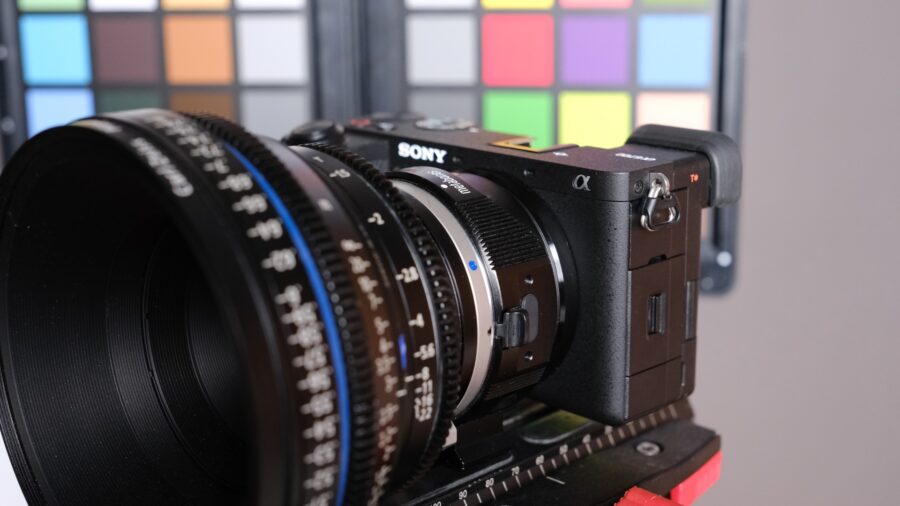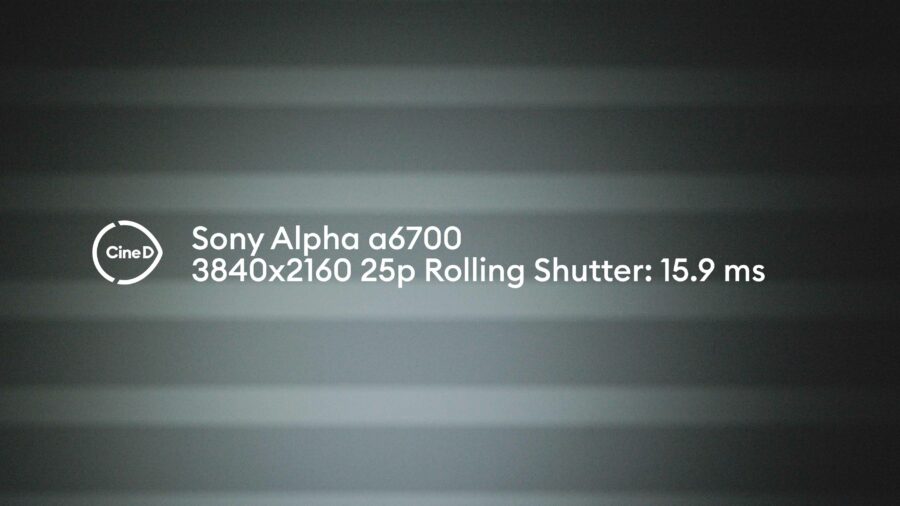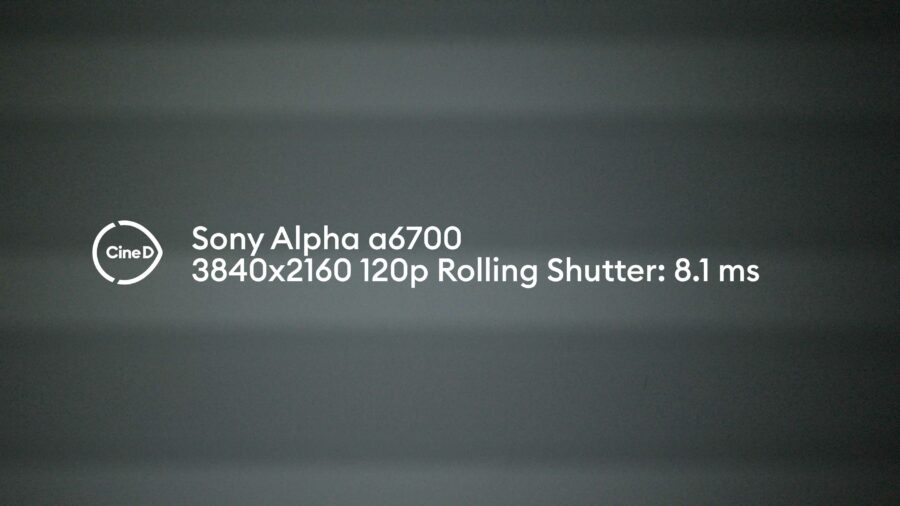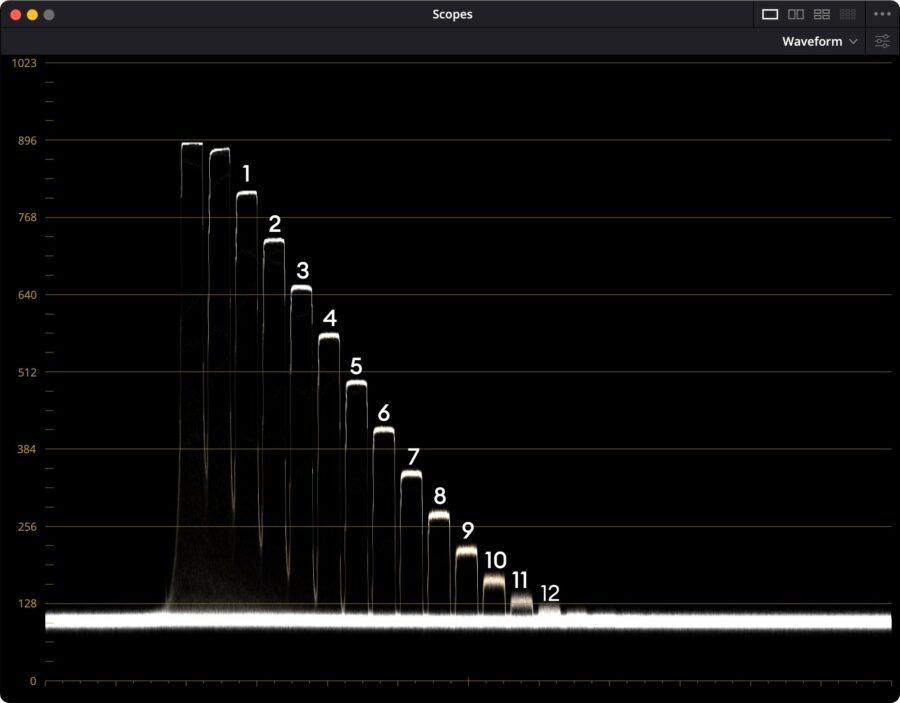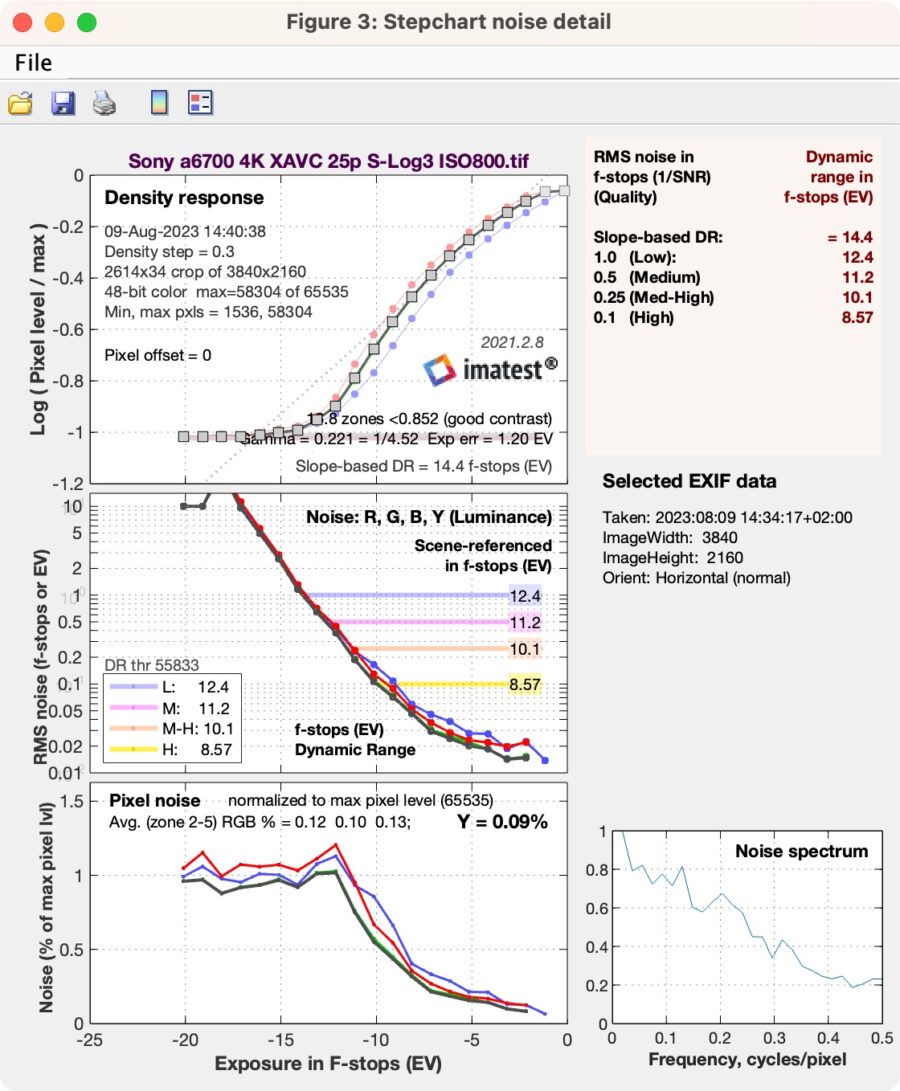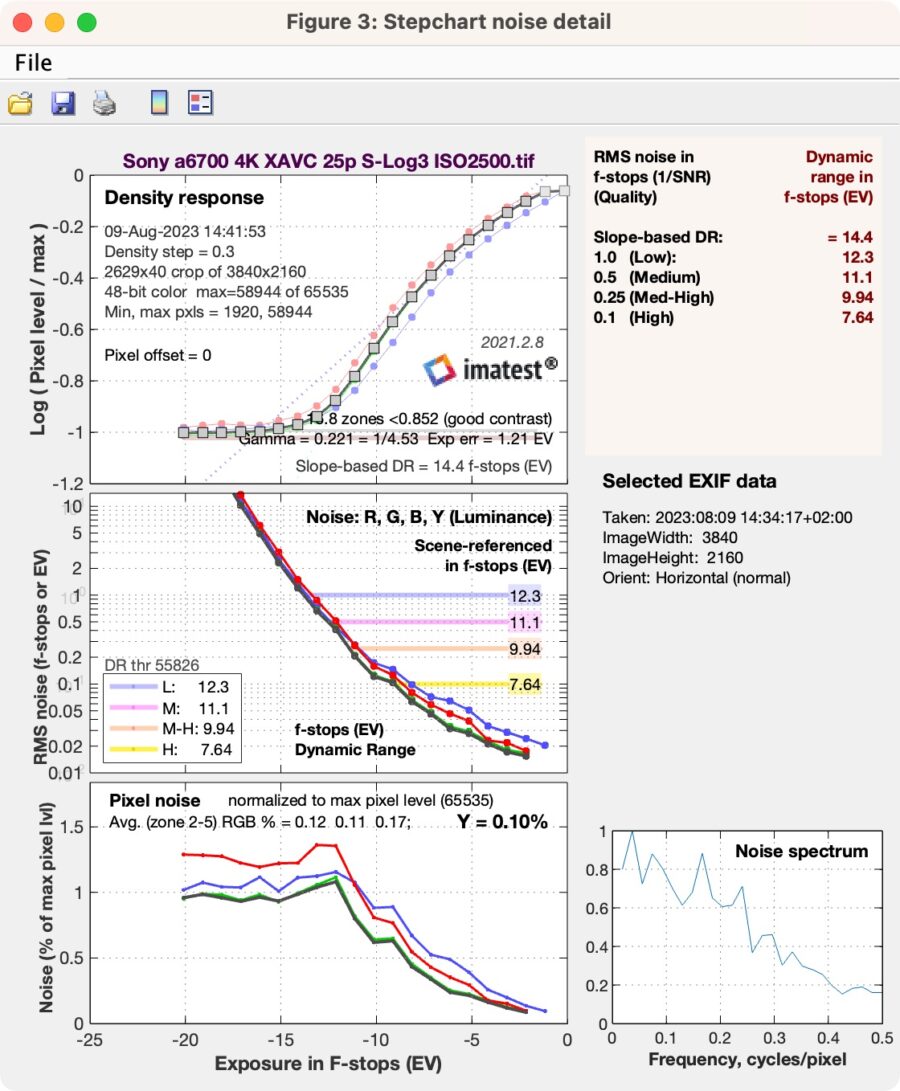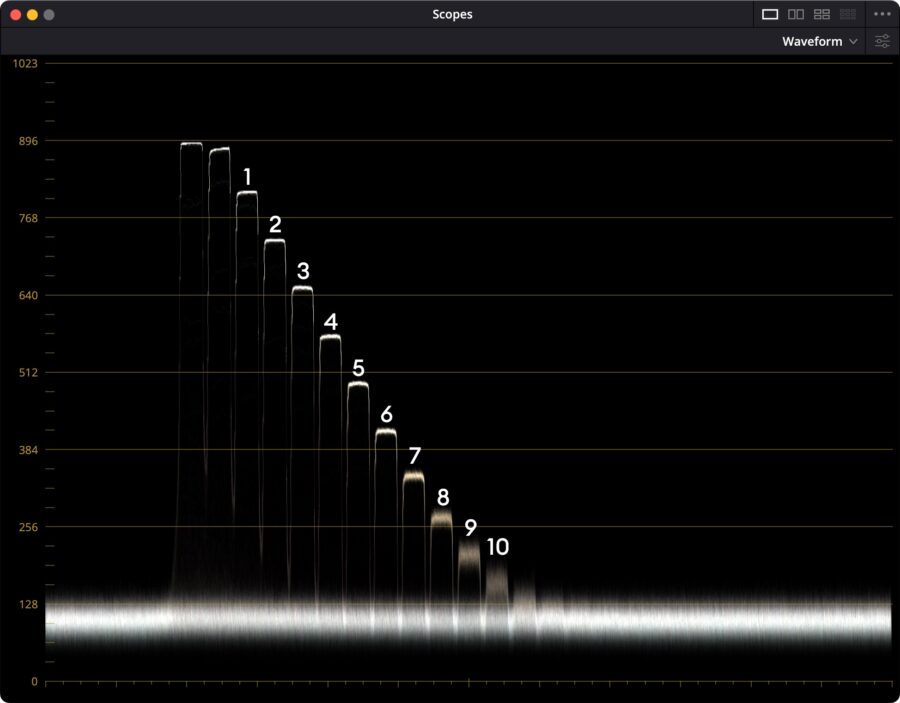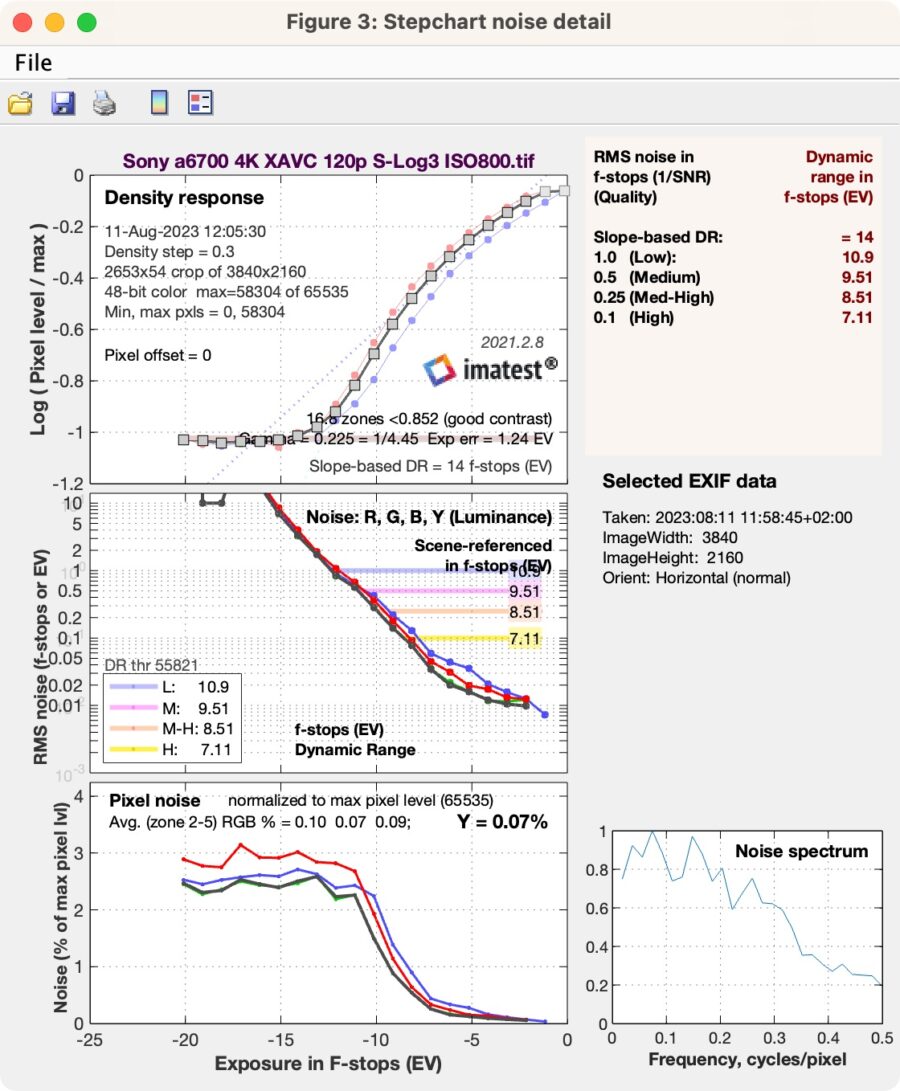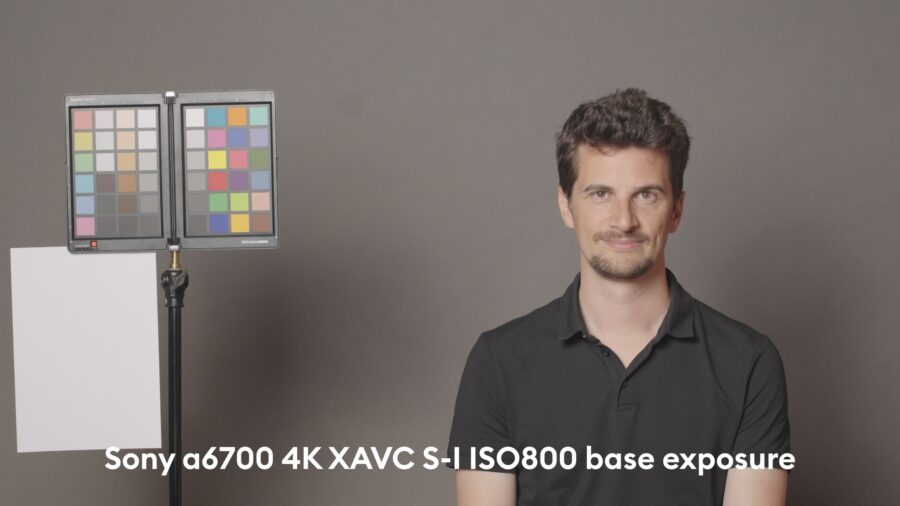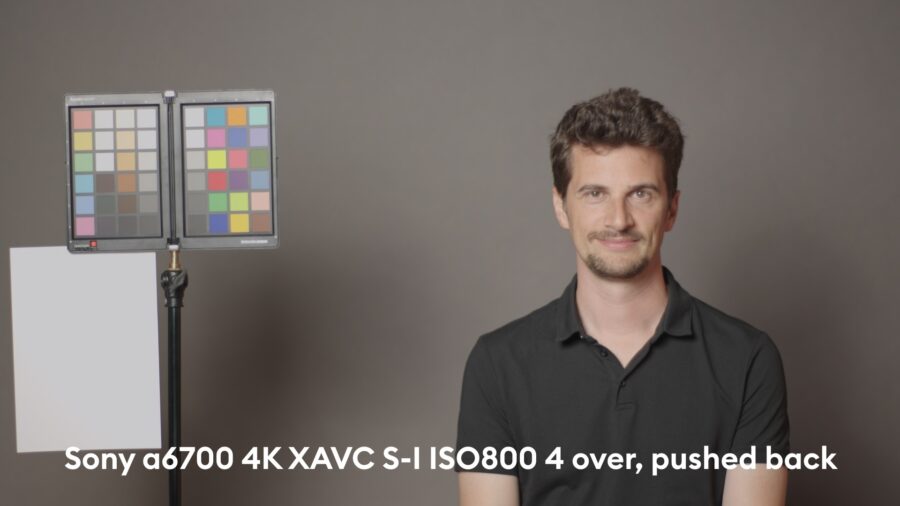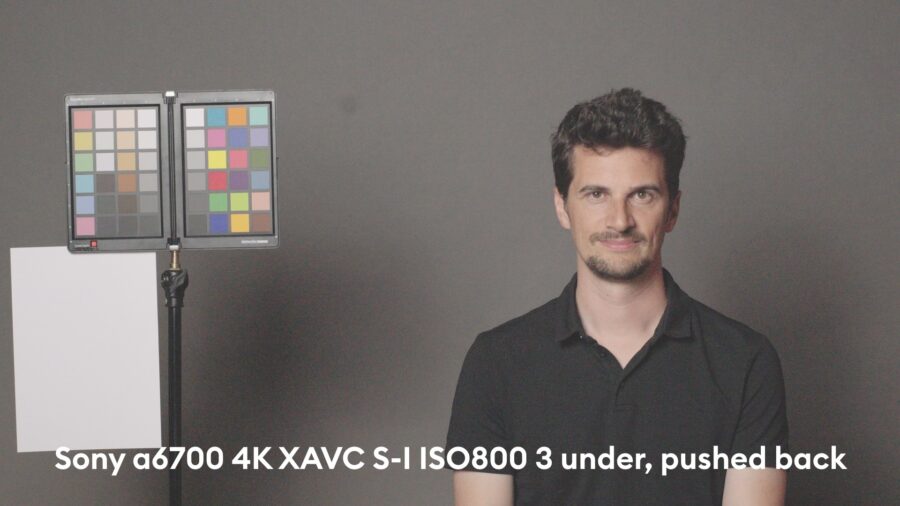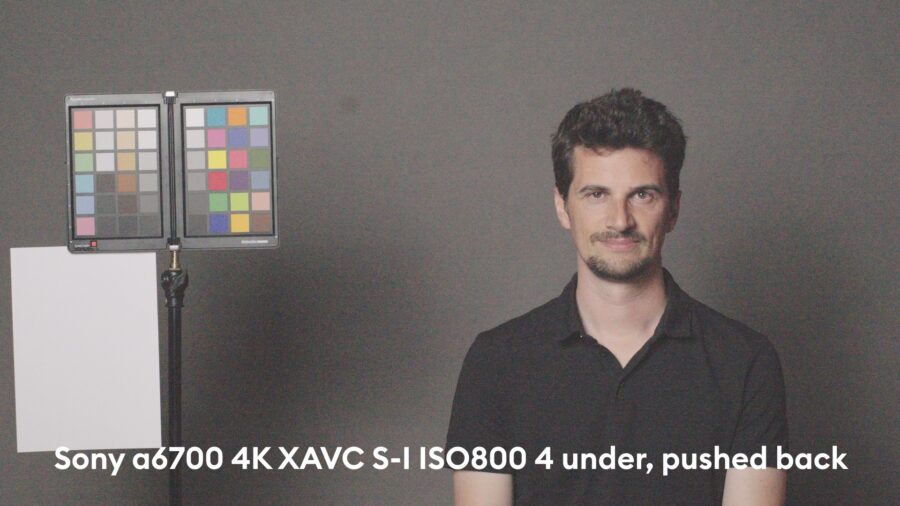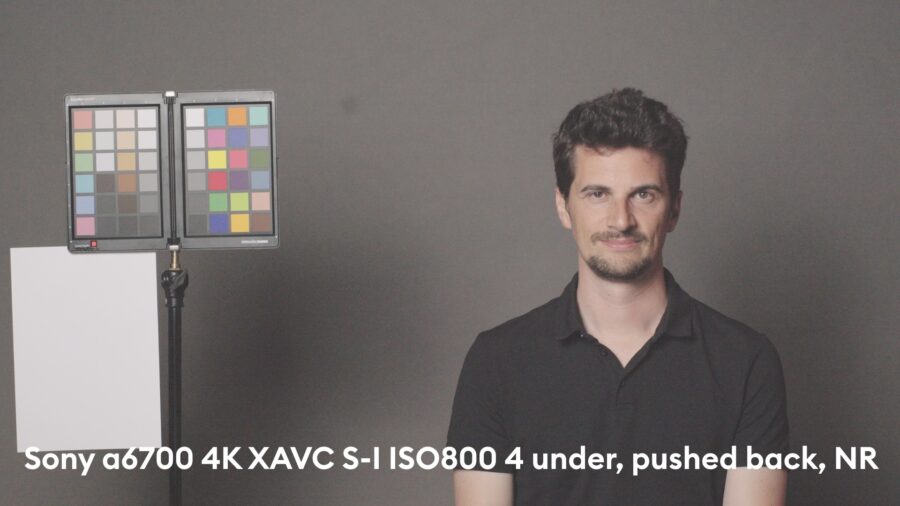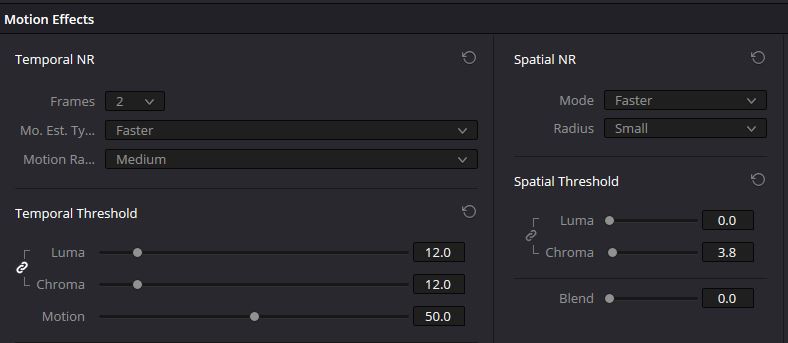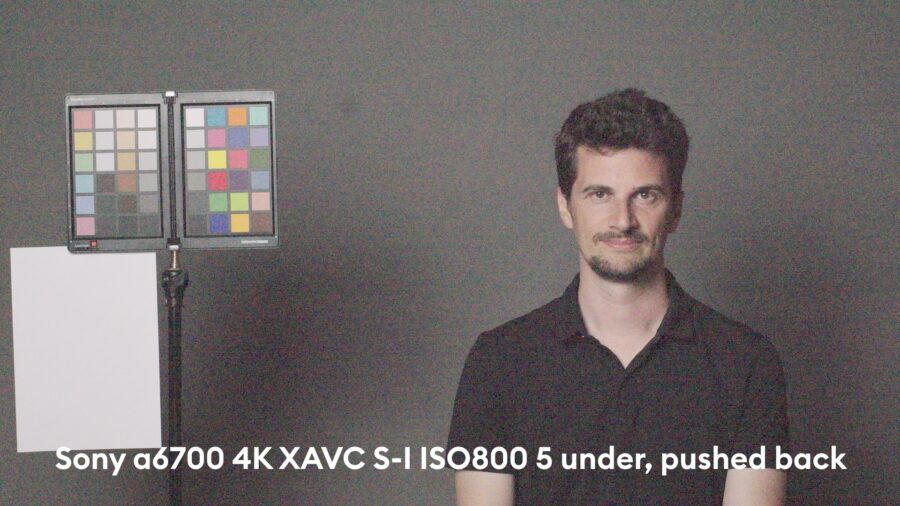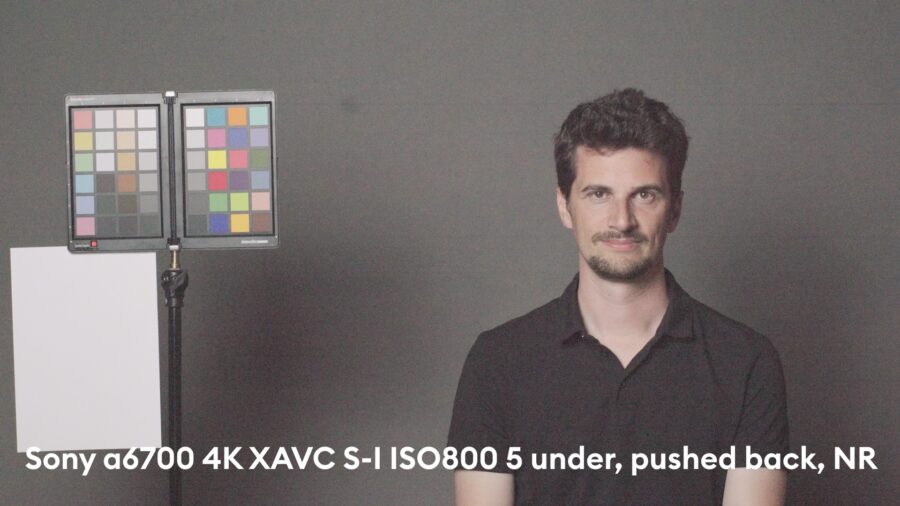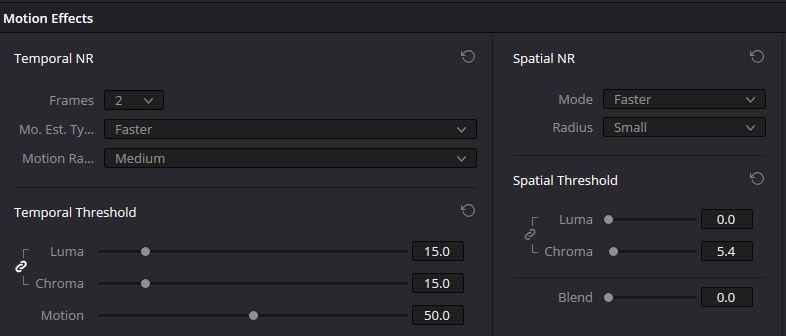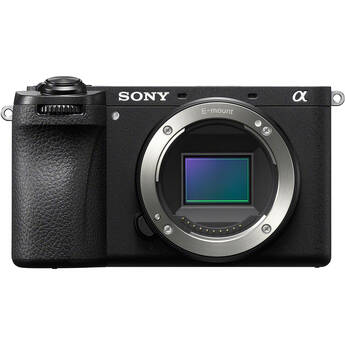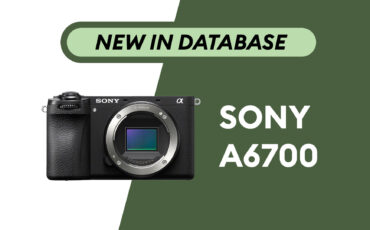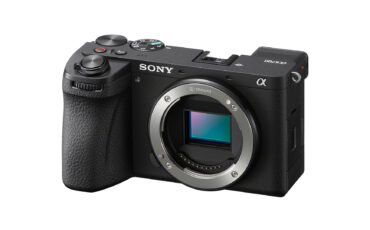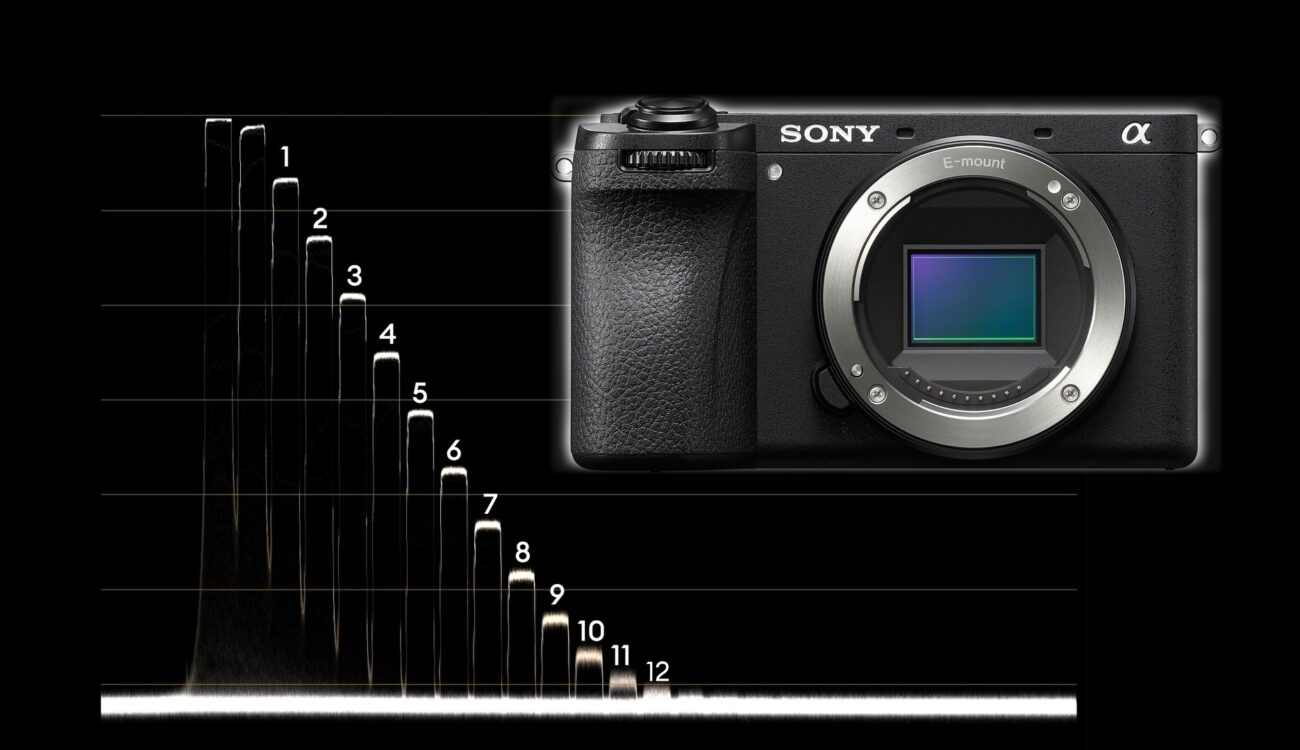
The new Sony a6700 looks like a very well-rounded package in terms of specs, price, and features for an APS-C camera. Despite the similarities of the sensor/processor to the Sony FX30, a model we already added to the lab database, we thought it worthwhile to have a more extensive look within the lab environment, including the latitude tests, which could be interesting for many readers. So let’s get going with the Sony a6700 Lab Test …
Please have a look at the article from my colleague Florian Milz here, where he takes an in-depth look at the new Sony a6700. For this lab test, again it was a nice collaboration with Florian as he contributed the rolling shutter and dynamic range measurements and helped to shoot the latitude tests – thank you!
Rolling shutter of the Sony a6700 in 25p and 120p
As usual, we use our strobe light to generate the sequence of black and white line pairs, which is an artifact resulting from the readout mode of CMOS sensors that can be used for the measurement.
For 4K 25p, we get the following result:
15.9ms (less is better) in 4K 25p is a good but average result for an APS-C sensor. The FUJIFILM X-H2S, for example, has a rolling shutter of 9.7ms. The best camera in this sensor class (albeit more like APS-H) we have measured so far is the ARRI ALEXA 35 with 5.7ms.
In 4K 120p, an additional crop of 1.6 is applied and the rolling shutter reduces to 8.1ms.
Dynamic range of the Sony a6700
If you are not aware of how we test dynamic range, please head over here first.
The sensor of the Sony a6700 has two native ISO modes, one at ISO800 and the other at ISO2500. For 4K XAVC S-I (all – intra 4:2:2 10bit) at 25p, we get the following waveform plot:
About 12 stops can be identified above the noise floor. IMATEST calculates 11.2 stops at a signal-to-noise ratio (SNR) of 2, and 12.4 stops at SNR = 1.
Those results are solid, but again, in the middle ground. The FUJIFILM X-H2S, for example, shows 11.9 / 13.4 stops at SNR = 2 / 1, very similar to the Blackmagic Pocket Cinema Camera 6K. Just for reference, the state-of-the-art for APS-C (or in this case APS-H) cameras is the ARRI ALEXA 35, which exhibited 15.1 / 16.3 stops at SNR = 2 / 1.
What I find quite remarkable in the middle diagram above the blue “12.4” line are the additional stops visible in the noise floor. Maybe those stops are partially usable in the latitude test.
For the second native ISO at 2500, we are getting very similar results. The waveform looks almost identical, and IMATEST calculates 11.1 / 12.3 stops at SNR = 2 / 1, which is just 0.1 stops less when you use the second native ISO.
Switching to 4K 120 frames per second leads to a native pixel read-out at an additional 1.6 crop factor, and as expected, the images are noisier, which is reflected in the dynamic range results.
Here is the waveform plot for 4K 120p at ISO800:
As can be seen above, the noise floor is much noisier, and we can identify around 10, maybe 11 stops above the noise floor. IMATEST confirms this giving 9.51 / 10.9 stops at SNR = 2 / 1:
Again, at ISO2500 for 4K 120p, only 0.1 stops are lost. IMATEST calculates 9.44 / 10.8 stops at SNR = 2 / 1.
Latitude of the Sony a6700
As said before, latitude is the capability of a camera to retain details and colors when over- or underexposed and pushed back to a base exposure. This test is very revealing, as it pushes every camera to its absolute limits – not just in the highlights but also in the shadows.
Our studio base exposure is (arbitrarily) chosen as having an (ungraded) luma value of 60% on the forehead of our subject on the waveform monitor. In this case, my dear colleague Nino:
From there forward, 4 stops of overexposure are possible until the red channel on Nino’s forehead starts to clip (to the left certain patches of the ColorChecker are already clipped):
Now, we start to underexpose in 1-stop increments and push back the exposure in post to match our base exposure. At 3 stops under, pushed-back noise starts to creep into the image:
We are already at 7 stops of exposure latitude, and the image still looks really good! Noise can be easily removed by noise reduction, but it is not really needed at this point (in my opinion). The combination of sensor/image pipeline/codec really shines with that little camera.
Now, let’s have a look at 8 stops of latitude, 4 stops under, and pushed back:
Yes, now the noise starts to have a significant impact on the image to the point where it becomes borderline – but it still looks somewhat OK as it is a finely dispersed noise. Hence, noise reduction can still save this image to an extent:
This is quite impressive. 8 stops of latitude are typically the maximum consumer cameras can achieve. With that result, the Sony a6700 is on par with many full-frame cameras like the Sony A1, the Panasonic S- series (S1, SH1, S5), and it is actually one stop better than the recent Pansonic S5II or the (full frame RAW capable) Canon R5 C!!
Now let’s go to 5 stops under:
Noise is now heavily corrupting the image. For example, have a look at the shadow side of Nino’s face – even noise reduction cannot clean up the skin:
Noise reduction cannot clean up the image (again, look at the shadow side of Nino’s face), and there are horizontal (static) lines appearing in the image, hence, “Game Over”.
That gives 8 stops of exposure latitude. Similar to what we got for the FUJIFILM X-H2S and also the Blackmagic Pocket Cinema Camera 6K (Pro). Very impressive to say the least! Just to give you the current benchmark for a full-fledged cinema camera, the ARRI ALEXA 35 has 12 stops of exposure latitude.
Summary of the Sony a6700 Lab Test
Sony’s new a6700 APS-C camera performs very well in the lab. Rolling shutter values are OK, dynamic range is on par with a lot of other consumer cameras for the APS-C as well as for full-frame sensors, and the latitude results really show the capabilities of the new sensor/image pipeline and robust all-I 4:2:2 10bit codec. This size/price/performance ratio is hard to beat!
Have you shot with Sony a6XXX series cameras? What do you like about them? Please tell us in the comments below.
